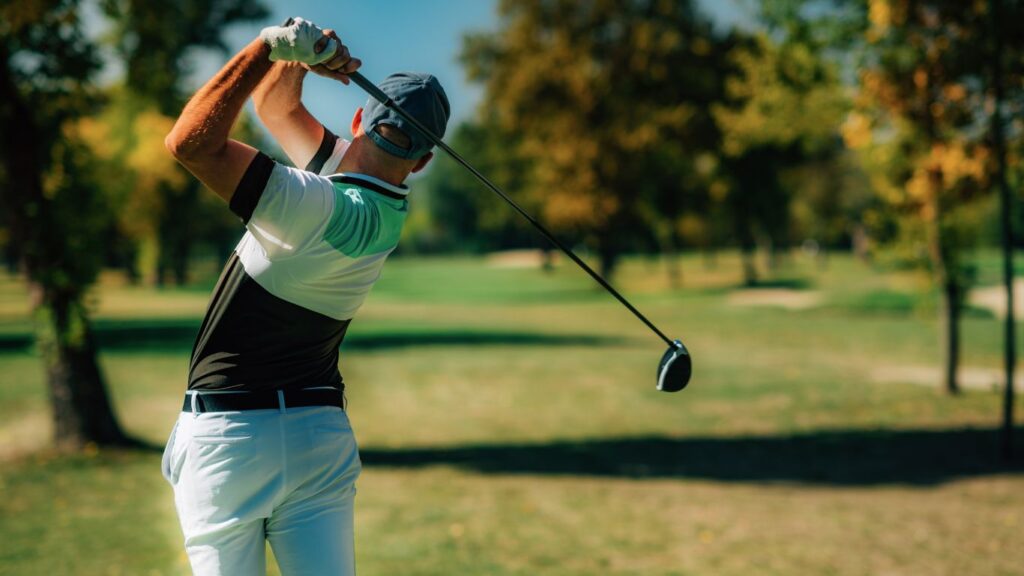whether you’ve just set your sights on the sprawling greens or you’re no stranger to the fairways, this guide promises to shed light on the art of driving a golf ball. Let’s embark on this journey, one swing at a time.
Now, we’ve all had those moments, especially when we see seasoned golfers on TV making it seem so effortless. But let’s spill some truth tea: perfecting that putt is a journey, often filled with many missteps before we can triumphantly say, “I did that on purpose. That’s exactly how to drive a golf ball.”
When one thinks of a golf course, the image that often strikes first is a golfer, with the sun casting a golden hue, swinging the club with a precision that sends the golf ball soaring down the fairway. But hitting the golf ball straight doesn’t come easy.
The art of driving is a blend of power, technique, and finesse. And here, we’ll lay down the steps to master this blend, aiming for both distance and accuracy which, when achieved, can significantly lower your scores.
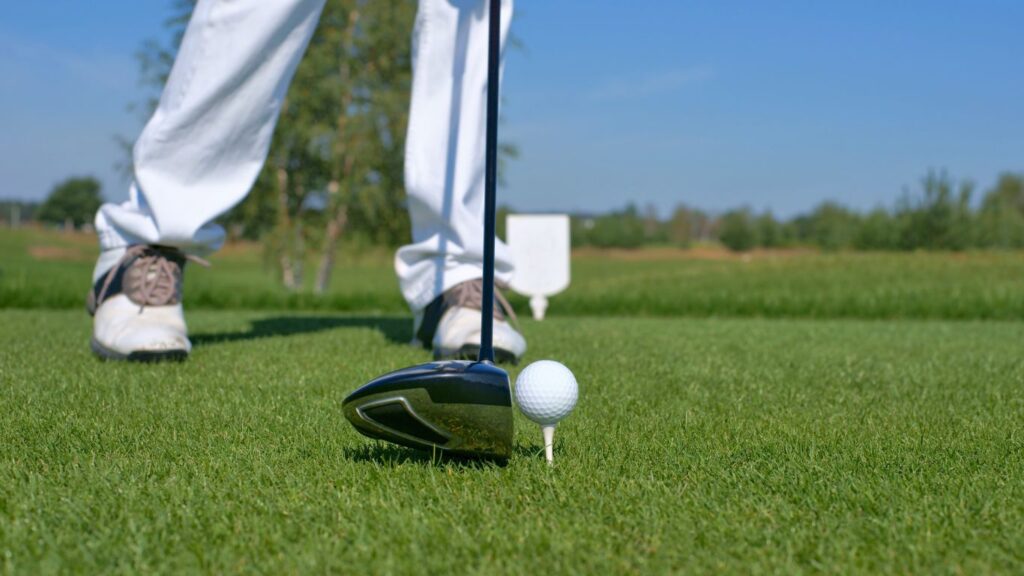
The Fundamentals
Before you flex those muscles and swing away, understanding the core principles of the game is paramount.
Grip type and Grip pressure
The grip forms the cornerstone of any golf swing. It’s your direct conduit to the club, and getting this right can set the tone for the rest of the swing. There are a few main types of grips: interlocking, overlapping, and the baseball grip.
While the choice boils down to personal comfort and hand size, consistency is key. A good grip should feel secure, yet not overly tight.
A too-loose grip can cause the club to slip, while an overly tight one can restrict wrist movement, essential for generating power.
Stance and Posture
This is where your ground golf game comes into play. Imagine your body as the foundation and the club as the structure.
A weak foundation can’t support a stable structure. Position your feet approximately shoulder-width apart, ensuring weight distribution is balanced between both feet. Incorporate a slight bend at the hips and knees.
Your back and right shoulder should be straight, and your chest slightly lifted, ensuring a line of sight to the golf ball.
Golf Ball Position
An often overlooked, yet pivotal aspect. Placing the golf ball too forward or too back in your stance can drastically affect your shot’s trajectory.
Ideally, for a driver, the golf ball should be positioned in line with the inside heel of your lead foot. This allows for an upward angle of attack, optimal for longer drives.
The Swing
The pièce de résistance of golf! Split into three segments, each holds its significance.
Backswing
Start by rotating your shoulders while allowing your arms to naturally rise, creating a wide arc. While your upper body is in motion, keep the lower body relatively stable.
The goal is to coil your body, storing energy to be unleashed in the downswing. As you draw the club back, your lead arm should and left shoulder remain straight, and the trailing elbow should point down.
By the top of your backswing, your shoulders should have turned about 90 degrees.

Downswing and Impact
Initiate your downswing with the hips, translating the stored energy from the backswing into kinetic motion.
As the hips lead, the upper body should follow suit. By the time you approach the golf ball, your hands and wrists play a pivotal role. A crucial element here is to maintain the ‘lag’ or the angle between the club shaft and your lead arm.
This lag is then released, producing a burst of energy, sending the golf ball skyward.
Follow-Through and Finish
The swing doesn’t end once the golf ball is off the tee. A complete follow-through ensures that all the generated energy is utilized.
As you swing through, your body should rotate towards the target. The finish position often serves as a diagnostic tool. If you find yourself balanced, with your chest facing the target and the club resting comfortably on your back, you’re on the right track.
Using the Driver
Ah, the driver! Often the most alluring club in any golfer’s bag, it embodies the spirit of modern golf, emphasizing power and distance.
But wielding this club comes with its intricacies. Let’s delve deeper into this marvel of golf engineering.
Anatomy of the Driver
Understanding the makeup of the driver is pivotal. Its design, particularly the clubface’s broad surface and the club’s extended length, sets it apart.
This design is intentional to optimize for distance. The larger clubface allows a wider impact area, meaning even if you don’t hit the absolute center (the sweet spot), you can still achieve a fairly long and straight drive.
However, the flip side is that its design can also amplify mistakes. A slight mishit with a driver can result in a vastly offline shot compared to a mishit with, say, a 7-iron.
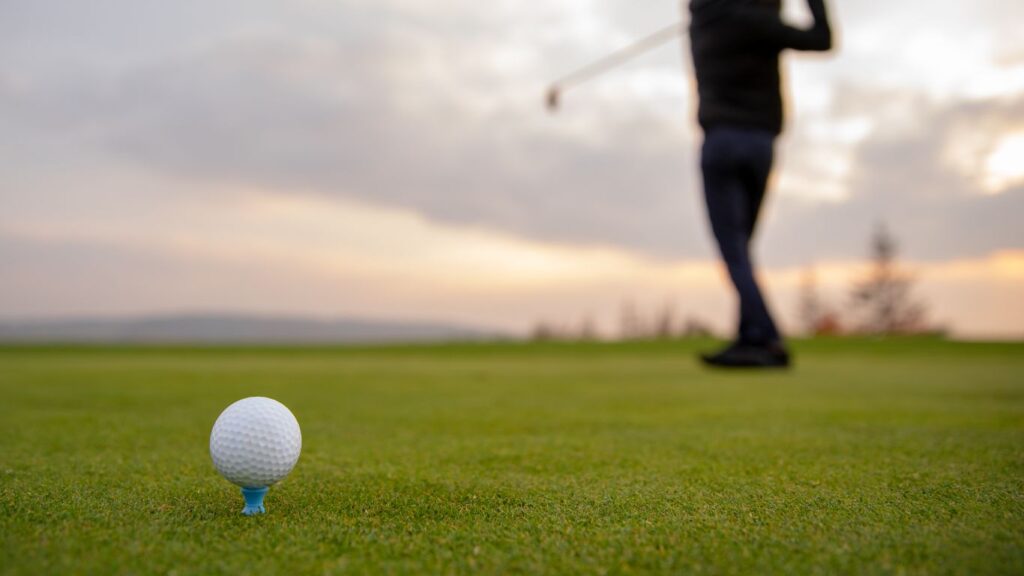
The Quest for the Sweet Spot
Every golfer’s dream is to consistently strike the golf ball on the driver’s sweet spot. This area on the clubface generates the maximum golf ball speed and minimum vibration, resulting in those gratifying long and straight shots.
Training your swing to find this sweet spot consistently can immensely improve your driving game.
Tee Height – The Unsung Hero of the Golf Swing
Often, golfers overlook the importance of the tee height when setting up for a drive. Yet, it plays a fundamental role in maximizing the driver’s potential.
Teed up correctly, approximately half the golf ball should be visible above the driver’s crown. This isn’t arbitrary; it’s to promote an upward angle of attack.
When you strike the ball on the upswing, two key things happen:
- Optimized Launch Angle: Striking on the upswing helps achieve a higher launch angle, which combined with the right amount of spin, can add those crucial extra yards to your drive.
- Reduced Spin: When hit correctly, the ball will have a reduced backspin, which is beneficial for longer rolls once the ball hits the fairway.
The Driver’s Shaft – Not Just a Stick
The driver’s shaft plays a monumental role in the quality of the drive. Its length, flex, material, and weight can influence the ball’s flight.
Modern drivers offer customization where players can choose the right shaft to complement their swing speed and style. For instance, a faster swing might benefit from a stiffer shaft, while those with a slower swing could opt for something with a bit more flex.
Adjustability is King
The latest generation of drivers comes with an array of adjustable features – loft, lie angle, face angle, and even weight distribution.
These can be tailored to suit individual swing characteristics. For instance, if a golfer tends to slice the ball, certain adjustments can help promote a straighter ball flight.
Using the driver efficiently is an art that combines understanding its design, optimizing tee height, and customizing its features to your advantage. But, as with all aspects of golf, practice remains the cornerstone.
The more you familiarize yourself with this golf club, and its nuances, the closer you get to unleashing its full potential and watching your ball soar down the fairway.
Common Mistakes and How to Fix Them
Every golfer, from the novice to the seasoned pro, has faced the demons of bad shots. Understanding them is half the battle won.
Slicing and Hooking
These are perhaps the most common errors. A slice sends the ball straight before curving left-to-right (for a right-handed player), often caused by an open clubface at impact.
A hook, on the other hand, sees the ball curve from right-to-left, often resulting from a closed clubface. The fix often lies in adjusting the driver swing grip, ensuring proper alignment, and practicing a balanced swing path.
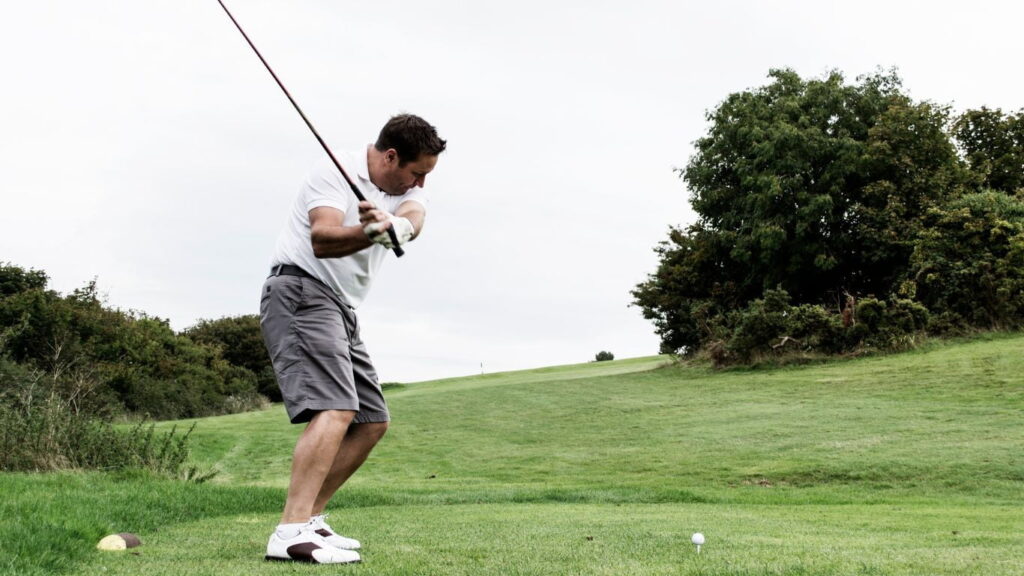
Topping the Ball
It’s that embarrassing moment when the golf club grazes the top of the ball. The key to fixing this is maintaining a steady club head position and ensuring a consistent spine angle throughout the swing.
Over-swinging
Eager to smash the ball, many golfers swing with too much zeal. Golf is a game of technique more than raw power. Cultivating a rhythmic, controlled swing often produces better results for most golfers rather than sheer muscle.
Drills and Exercises
Practice is the linchpin of improvement. Incorporating specific drills can fine-tune your swing mechanics. For instance, practicing half-swings helps focus on the swing path and contact point.
Additionally, engaging in strength and flexibility exercises, like yoga or resistance training, not only improves your swing but also guards against potential injuries.
The Power of Drills: Drills act as a magnifying glass, focusing on specific aspects of your game that might otherwise get lost in the broader act of playing. They serve as incremental steps toward mastering the whole.
Half Swing This drill is a gem for those striving to attain a cleaner contact and a more consistent swing path. By truncating the swing, you’re essentially stripping it down to its core components, allowing for a sharper focus. To practice:
- Begin with your wedge or a short iron.
- Take your normal stance but instead of a full backswing, limit it to where your golf club is parallel to the ground.
- Ensure your wrists are hinged properly and your backswing feels controlled.
- Swing through, again stopping when your club reaches parallel on the follow-through.
- The emphasis here should be on smoothness and control, feeling the club head path, club head speed and its point of contact with the ball.
Alignment Sticks for Direction: One of the most common oversights for amateur golfers is improper alignment. Using alignment sticks on the ground during practice sessions can train your eyes and body to line up correctly to the target.
- Place one stick pointing toward your target and another parallel to it where your feet line up. This creates a railway track-like alignment.
- As you address the ball, ensure your feet, hips, and shoulders are parallel to the alignment stick under your feet, while the ball-to-target line matches the other stick.
- Delayed Impact for Lag: Creating lag in the downswing is crucial for generating power. This drill aims to heighten the feeling of maintaining wrist hinge until the last moment before impact.
- Start by taking a normal backswing.
- As you initiate your downswing, consciously try to delay the unhinging of your wrists.
- The goal is to feel increased tension in your wrists and forearms as you approach the ball.
Fortifying the Body with Exercises: Beyond specific golf techniques, overall physical fitness plays an indispensable role. A well-conditioned body translates to a more efficient swing and reduces the risk of injuries.
- Yoga for Flexibility and Focus: The benefits of yoga for golfers are manifold. Poses like the ‘Downward Dog’ or ‘Triangle Pose’ can enhance flexibility in the hamstrings and hips, promoting a smoother, restriction-free swing. Additionally, the meditative aspects of yoga can sharpen mental focus, an invaluable trait on the greens.
- Resistance Training for Power: While golf might not demand the brute strength seen in some sports, a certain level of muscle power, especially in the core and legs, can significantly boost your driving distance. Exercises like squats, lunges, and planks, when done with proper form, can fortify these essential muscles.
- Balance Drills for Stability: A stable base is crucial for a consistent golf swing. Simple balance exercises, like standing on one leg or using a balance board, can strengthen the stabilizer muscles in your legs and core, leading to a steadier swing and better weight transfer.
- Dynamic Stretching Before Rounds: To prep your muscles for a game and reduce injury risk, incorporate dynamic stretches focusing on the major muscle groups involved in golf. Leg swings, arm circles, and torso twists can warm up and limber the body.

Tips for Success
Your mindset plays a vital role. Visualizing successful shots primes your body for success. And remember, golf is a game of patience. Regular practice sessions, a keenness to learn, and sometimes seeking external help, like getting custom-fitted clubs or taking lessons, can pave the path to success.
Harnessing the Power of Visualization
Before you even swing your club, taking a moment to visualize your shot can be transformative. Our brain, in many ways, doesn’t differentiate between vividly imagined scenarios and real ones.
When you visualize a successful shot—be it a long drive down the fairway, a chip that lands perfectly on the green, or a putt sinking into the hole—you’re essentially rehearsing success.
- Technique: Close your eyes for a moment. Picture the ball’s trajectory, the feel of the club in your hand, the sound of the perfect strike, and the satisfaction of seeing the ball land exactly where you intended. This mental rehearsal primes your muscles and brain, aligning them for success.
Embracing Patience
Golf is as much a test of patience as it is of skill. Not every shot will go as planned. Sometimes, despite your best efforts, you might find your ball in a sand trap or lost amidst tall grass.
- Coping Mechanism: When faced with such setbacks, instead of getting frustrated, take a deep breath. Remember, even the world’s best golfers have off days. Each shot is a new opportunity. Reset, refocus, and tackle the next shot with renewed determination.
Committing to Regular Practice with the Golf Club
There’s no substitute for consistent practice. It’s the bedrock upon which golfing prowess is built.
Whether it’s working on your swing mechanics, improving your putting, or simply getting a feel for different clubs, setting aside regular time for focused practice is crucial.
- Pro Tip: Maintain a practice journal. Jot down what you worked on, what felt good, and areas you think need improvement. This reflective practice can accelerate your learning curve.
The Joy of Continuous Learning
Golf is a game where there’s always something new to learn, be it a technique, a strategy, or even understanding a specific course better.
- Learning Avenues: Subscribe to golf magazines, watch tutorials, attend workshops, or even just chat with fellow golfers. Every piece of new knowledge can potentially add a new dimension to your game.
Seeking External Resources
Sometimes, the path to improvement lies outside of self-practice.
- Custom-Fitted Clubs: Just like a well-tailored suit enhances your appearance, clubs tailored to your physique and playing style can drastically improve your game. Investing in custom-fitted clubs ensures that your equipment complements, rather than hinders, your natural swing.
- Professional Lessons: Even seasoned golfers can benefit from a fresh set of eyes analyzing their technique. Hiring a coach or taking occasional lessons can provide insights and corrections that might be hard to see from a self-assessment perspective.
The journey of mastering the golf drive is filled with highs and lows, joys and frustrations. But with every swing, every miss, and every soaring drive, you’re evolving, learning, and inching closer to mastery.
Embrace the journey, cherish the learning, and remember – golf is as much a game of the mind as of skill.
Why is my golf ball not going straight when I drive?
Several factors can influence the ball’s direction, including grip, stance, swing path, and clubface alignment. Ensuring a neutral grip, proper alignment, and practicing consistent swing paths can improve the accuracy of your drives.
How can I increase my golf drive distance?
Increasing drive distance often boils down to swing mechanics, club selection, and physical conditioning. Refining your swing technique, using custom-fitted clubs, and incorporating strength and flexibility exercises can lead to longer drives.
How high should I tee up the ball for a driver?
For optimal results with a driver, roughly half of the golf ball should sit above the driver’s crown when teed up. This promotes an upward angle of attack and can optimize both distance and trajectory.
What’s the role of visualization in driving success?
Visualization primes your body and mind for successful shots. By mentally rehearsing the ball’s trajectory and impact, you’re aligning your muscles and brain for the desired outcome, enhancing the probability of a successful drive.
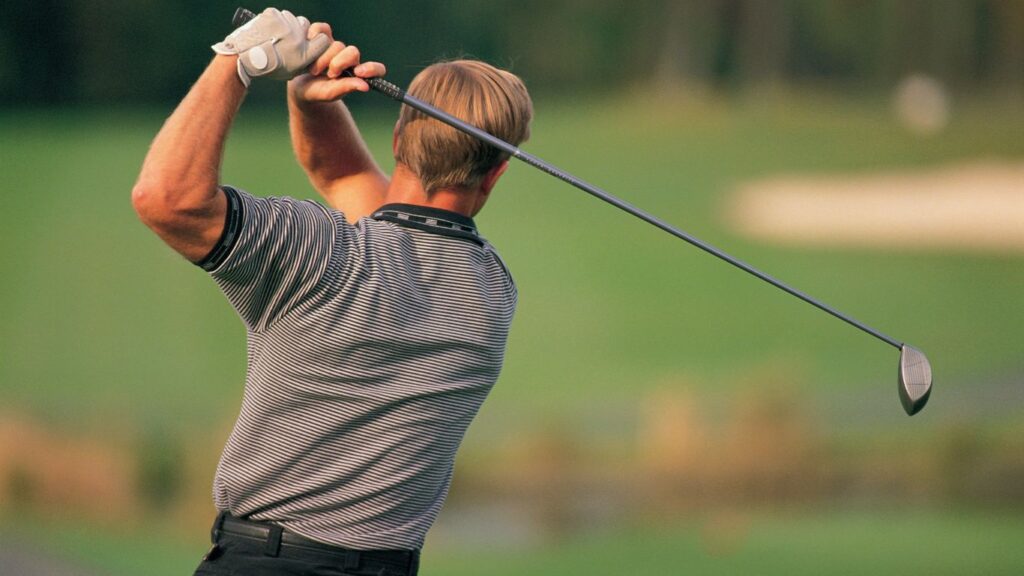
Are custom-fitted golf drivers really beneficial?
Yes, custom-fitted drivers tailored to your unique physique and playing style can drastically improve your game. By ensuring that your equipment complements your natural swing, you can achieve better accuracy and distance.
How often should I practice my golf drive for improvement?
Consistent practice is key to mastering the golf drive. While the frequency can vary based on individual goals, setting aside dedicated time at least 2-3 times a week for focused driving practice can lead to noticeable improvement.
Can professional golf lessons really improve my drive?
Absolutely. Even seasoned golfers can gain fresh insights and corrections from professional coaching. Lessons can provide a new perspective on techniques and areas of improvement, accelerating your learning curve.
Why is strength and flexibility important for driving a golf ball?
Strength, especially in the core and legs, helps generate power in your swing. Flexibility, on the other hand, ensures a smoother, unrestricted motion. Combined, they can boost the efficiency, distance, and accuracy of your drives.

